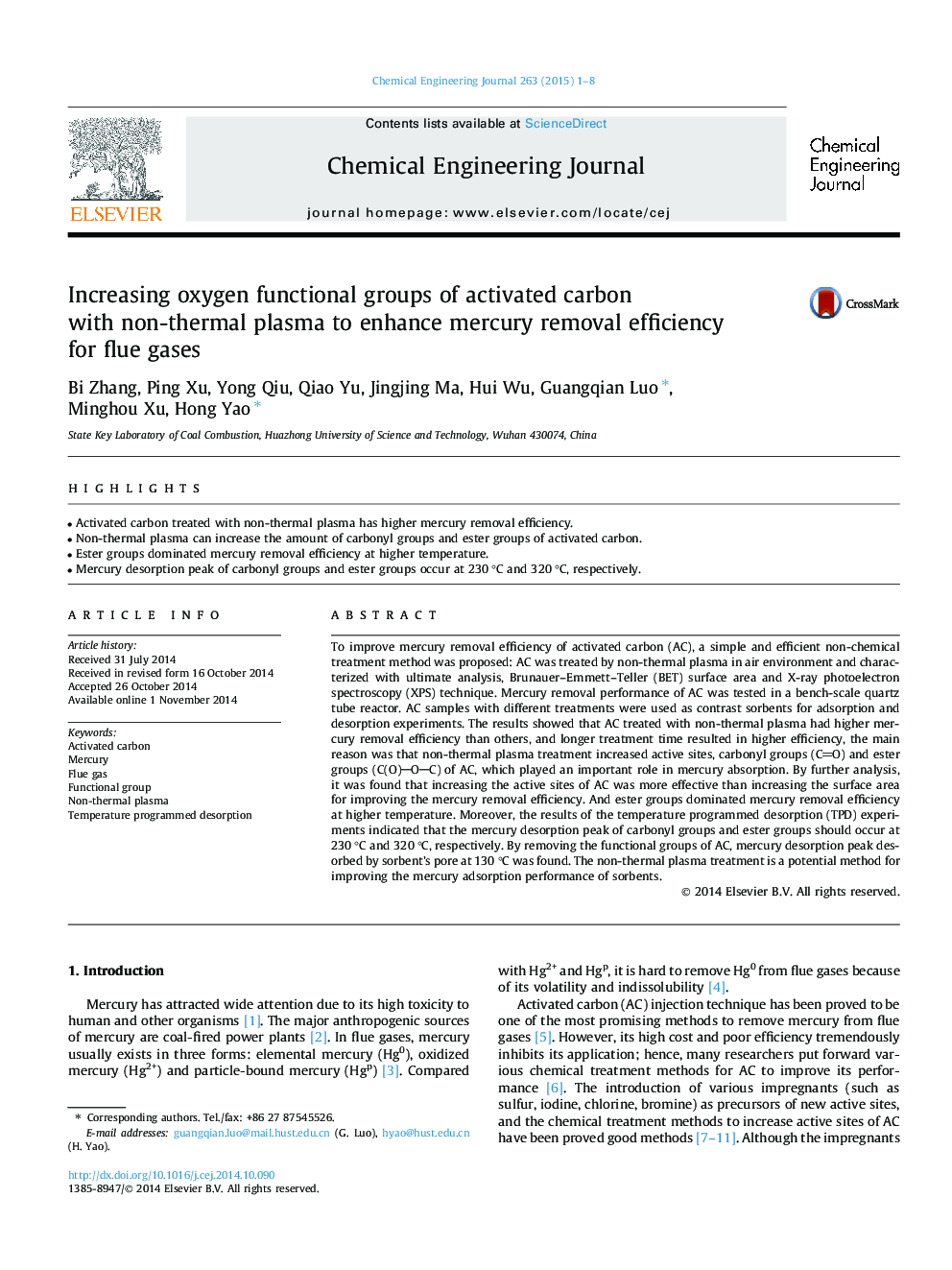| کد مقاله | کد نشریه | سال انتشار | مقاله انگلیسی | نسخه تمام متن |
|---|---|---|---|---|
| 146669 | 456376 | 2015 | 8 صفحه PDF | دانلود رایگان |
• Activated carbon treated with non-thermal plasma has higher mercury removal efficiency.
• Non-thermal plasma can increase the amount of carbonyl groups and ester groups of activated carbon.
• Ester groups dominated mercury removal efficiency at higher temperature.
• Mercury desorption peak of carbonyl groups and ester groups occur at 230 °C and 320 °C, respectively.
To improve mercury removal efficiency of activated carbon (AC), a simple and efficient non-chemical treatment method was proposed: AC was treated by non-thermal plasma in air environment and characterized with ultimate analysis, Brunauer–Emmett–Teller (BET) surface area and X-ray photoelectron spectroscopy (XPS) technique. Mercury removal performance of AC was tested in a bench-scale quartz tube reactor. AC samples with different treatments were used as contrast sorbents for adsorption and desorption experiments. The results showed that AC treated with non-thermal plasma had higher mercury removal efficiency than others, and longer treatment time resulted in higher efficiency, the main reason was that non-thermal plasma treatment increased active sites, carbonyl groups (CO) and ester groups (C(O)OC) of AC, which played an important role in mercury absorption. By further analysis, it was found that increasing the active sites of AC was more effective than increasing the surface area for improving the mercury removal efficiency. And ester groups dominated mercury removal efficiency at higher temperature. Moreover, the results of the temperature programmed desorption (TPD) experiments indicated that the mercury desorption peak of carbonyl groups and ester groups should occur at 230 °C and 320 °C, respectively. By removing the functional groups of AC, mercury desorption peak desorbed by sorbent’s pore at 130 °C was found. The non-thermal plasma treatment is a potential method for improving the mercury adsorption performance of sorbents.
Journal: Chemical Engineering Journal - Volume 263, 1 March 2015, Pages 1–8
